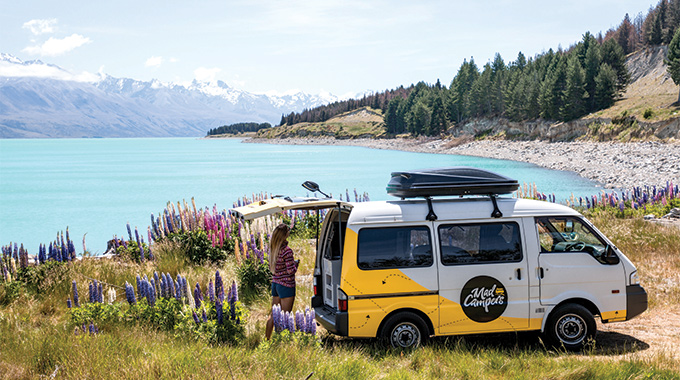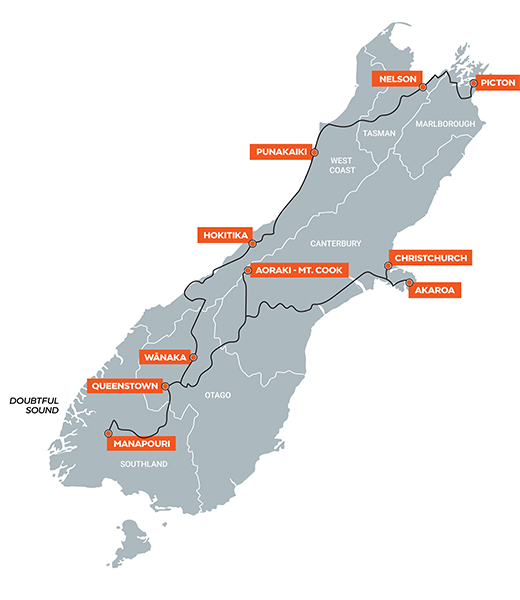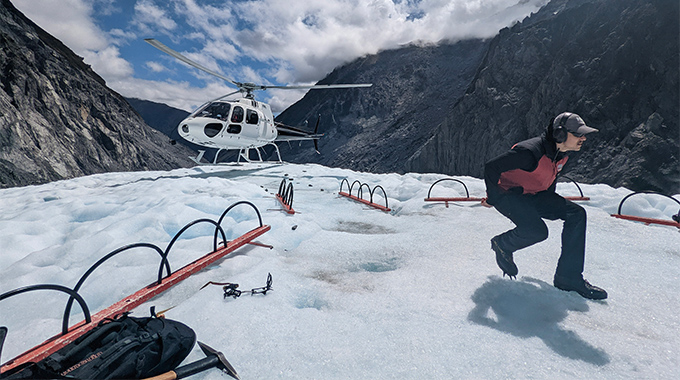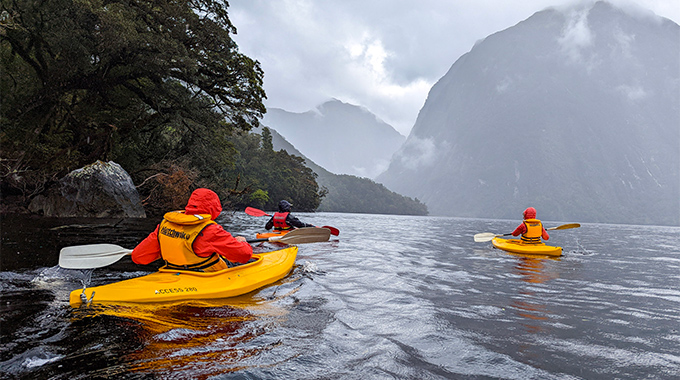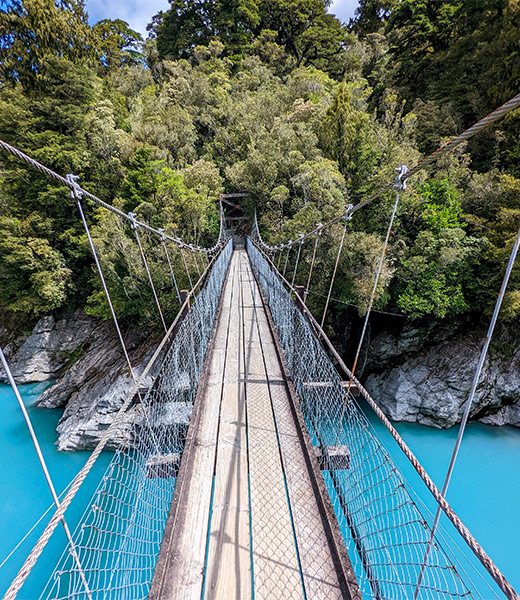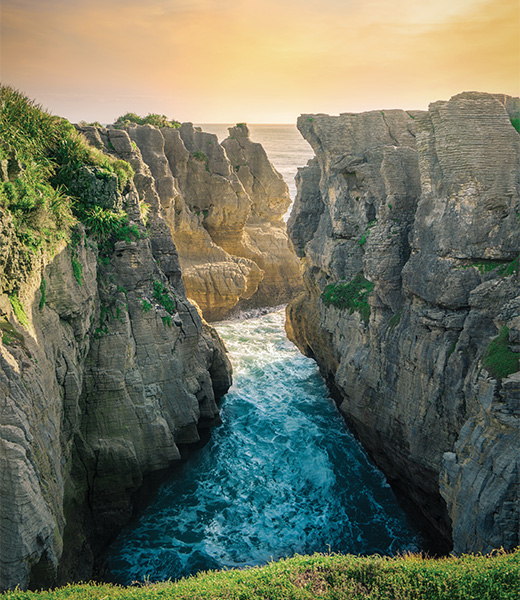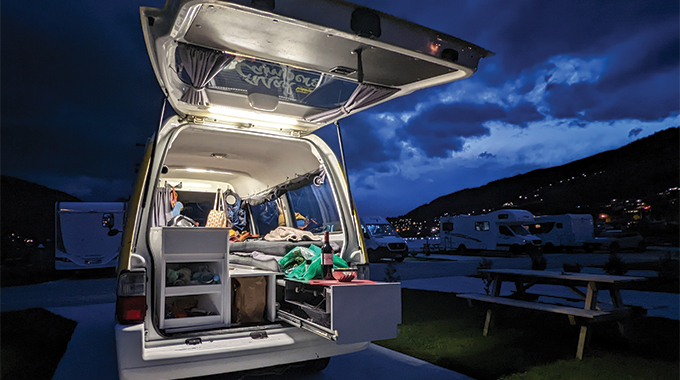My cheery yellow camper van crests the rim of an ancient caldera, and I laugh in surprised delight as a living postcard appears before me.
Lush farmland ripples gently downslope toward a sailboat-flecked bay that’s so surreally blue—a product of fine silt particles left by glacial erosion—that it almost glows from within. Somewhere in the distance is today’s destination, the garden-like township of Akaroa.
For the first time in a while, giddiness sweeps over me. I scan the twisting road ahead for a pullout and snap the first of what will eventually be—I kid you not—more than 3,000 photos of New Zealand’s stunning South Island.
I’ve always loved a road trip, though mine are typically much shorter and rarely involve bucket list wonders like exploring glowworm caves and heli-hiking glaciers.
Remote and rugged, the South Island is built for epic adventures, squeezing moody fiords, pristine rainforests, towering alps, dramatic coasts, and some of the planet’s most distinctive wildlife into a landmass roughly one-third the size of California.
Driving its winding, well-paved roads has long been considered both a local rite of passage and one of the most intimate ways for visitors to take it all in.
But a lot has changed between when I planned this trip—originally scuppered in 2020 by a certain global crisis, then revived when the country reopened for tourism in July 2022—and when I first fired up the camper van in Christchurch this morning.
For one, I’ve just turned 40, a natural reflection point. And, several months ago, I unexpectedly lost my mother.
By nature, I’m pretty buoyant. The ability to find joy just about anywhere is a gift from Mom, actually. But everything has felt so heavy lately. To be honest, I’m a little lost, and for once it has nothing to do with my infamously bad sense of direction.
And so, despite my ambitious 12-day itinerary spanning 1,300 miles and a “must see” list longer than a CVS receipt, I’m no longer exactly sure what I’m looking for on this journey.
Maybe it’s some life-affirming truth about the world; maybe just a beautiful, much-needed distraction. But the uncertainty of the past few years has inspired me not to wait any longer to find out.


